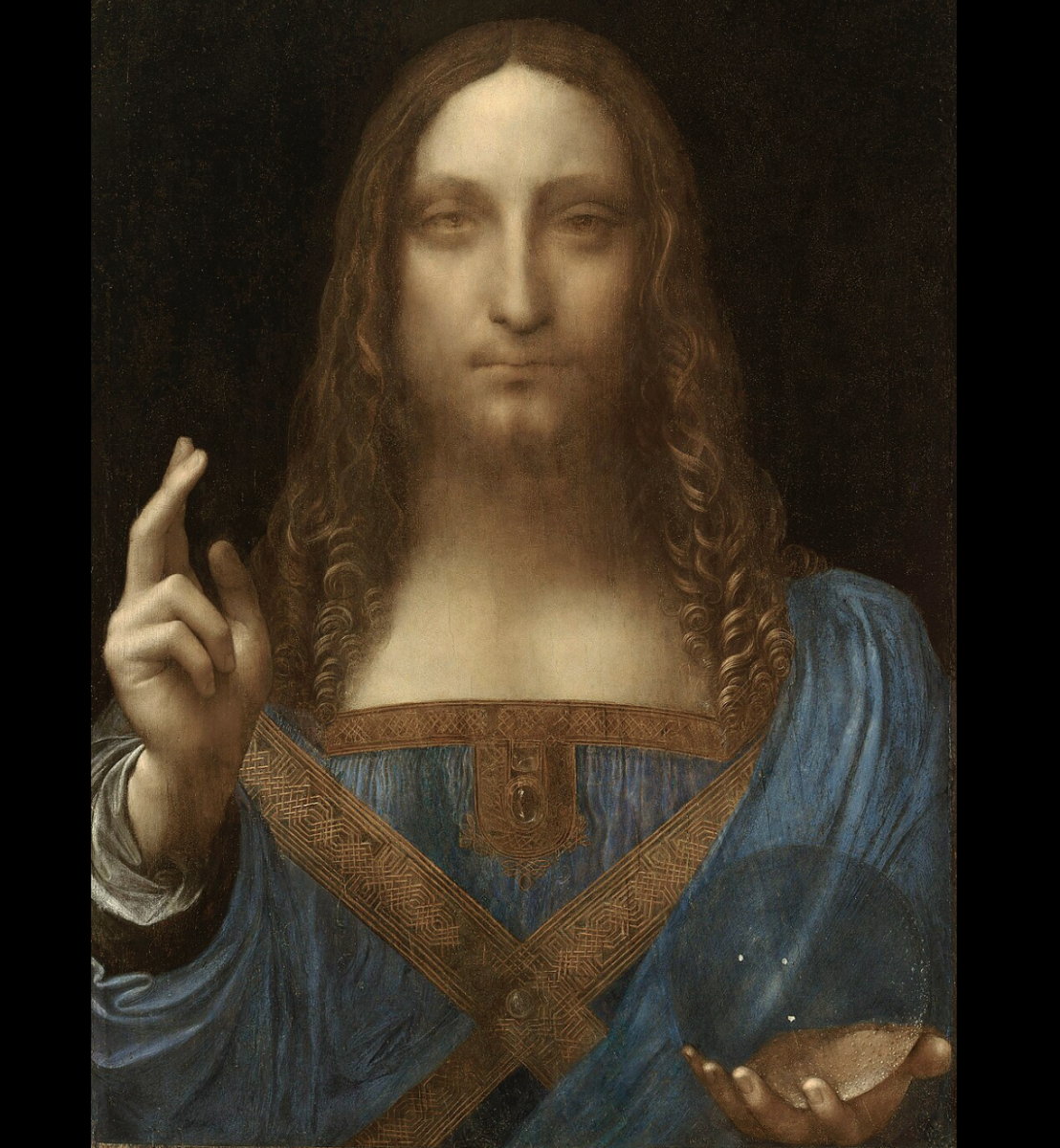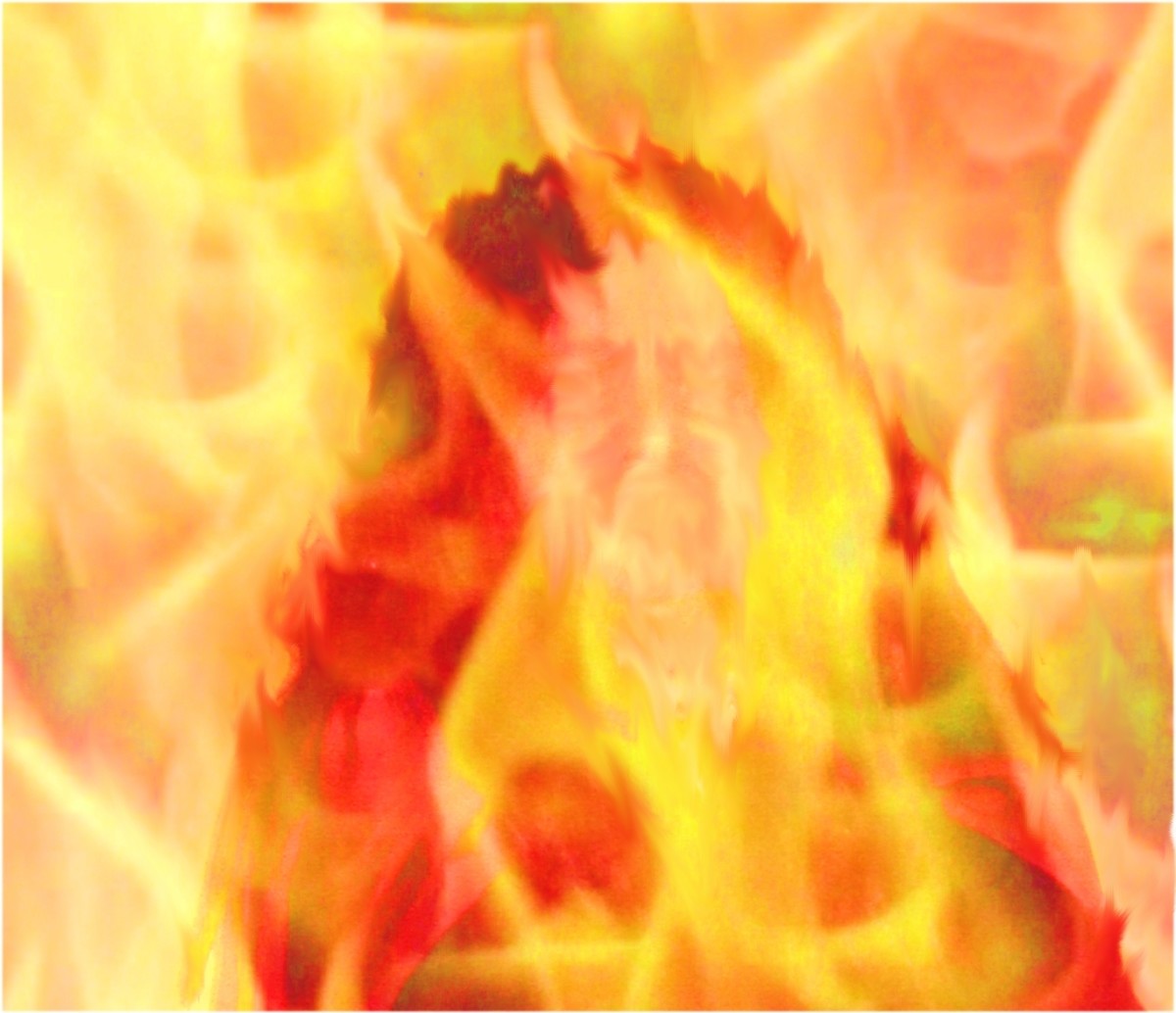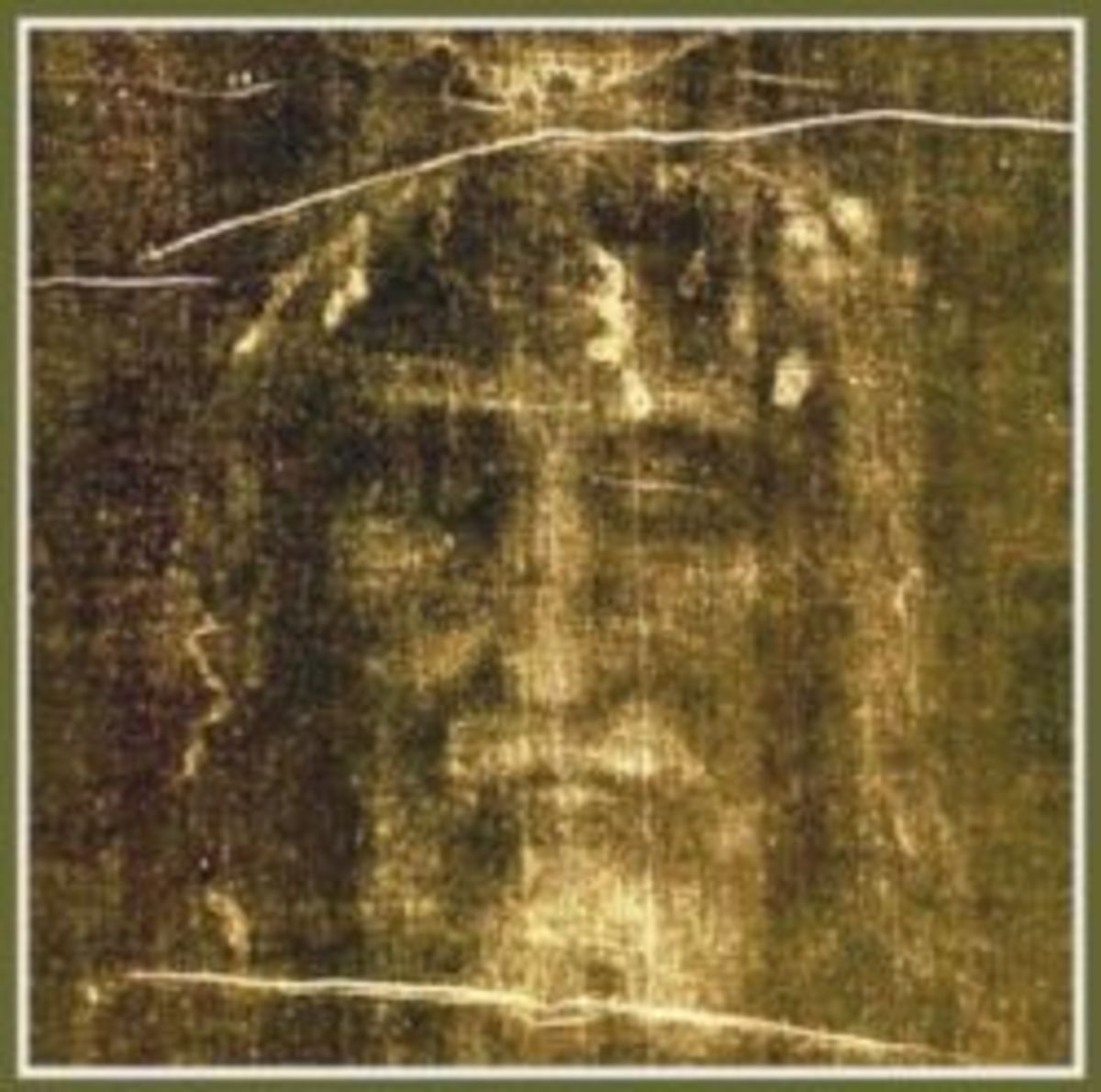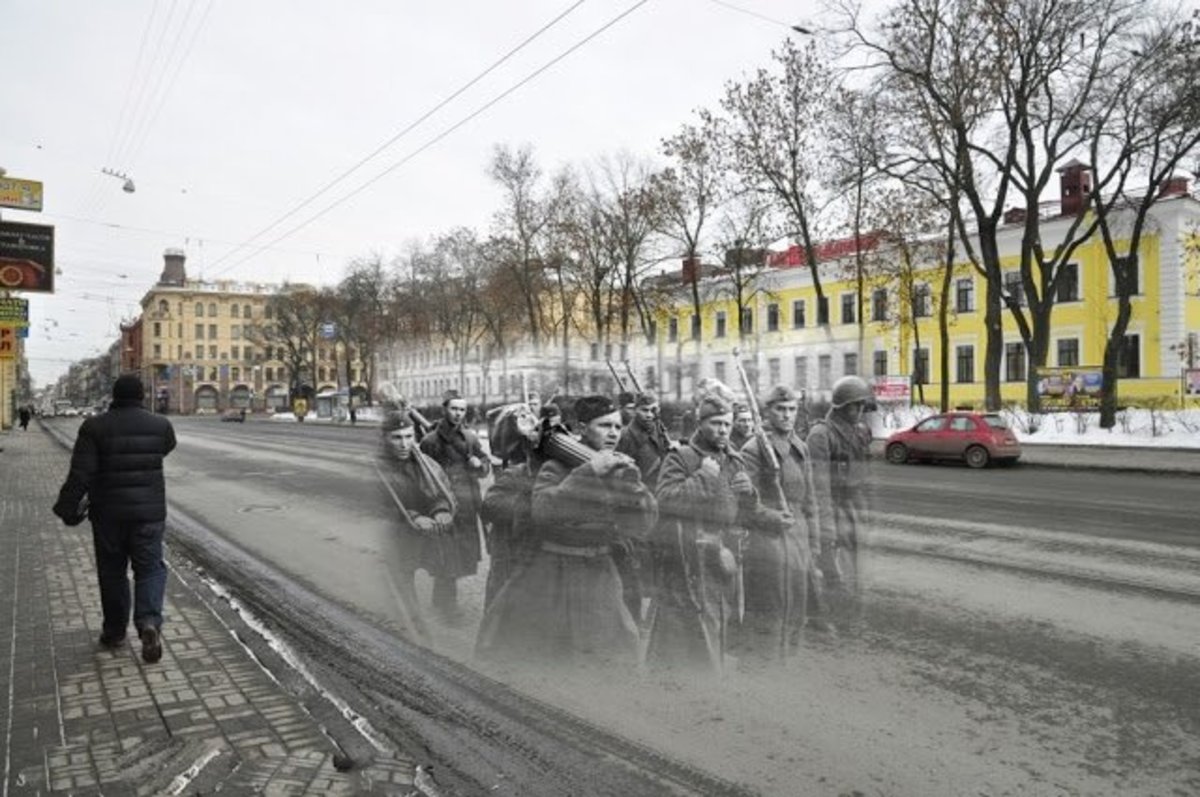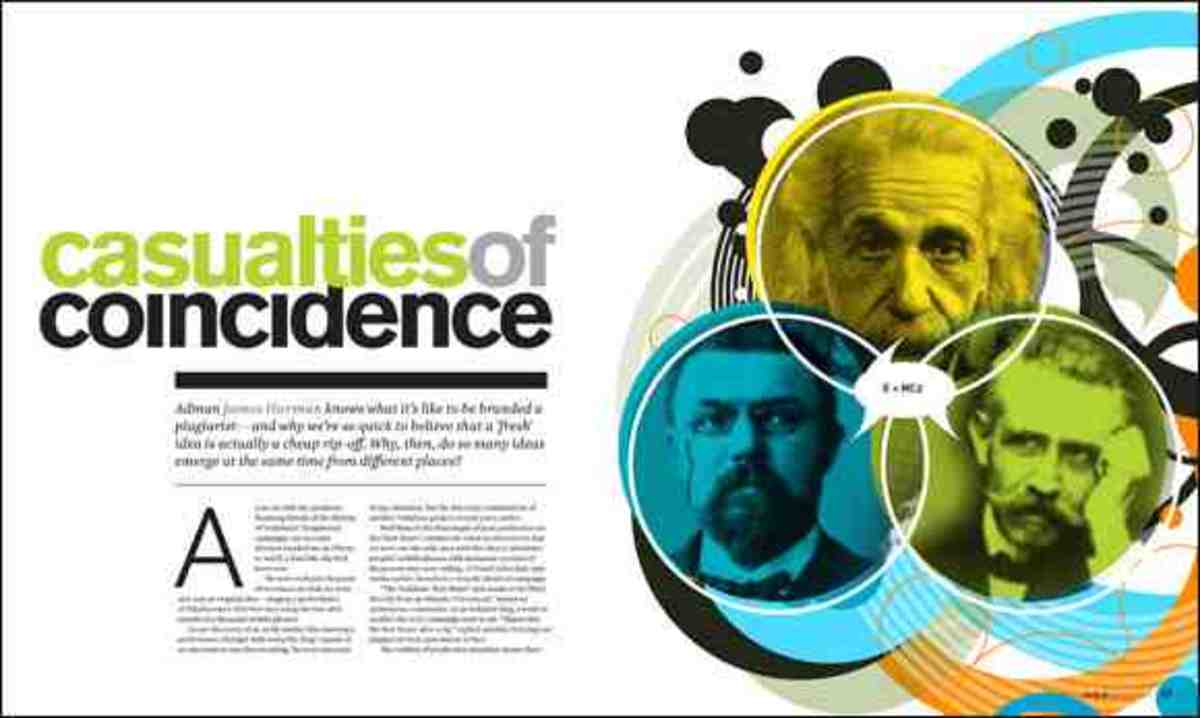The Shroud of Turin - The Face of Christ? - Mystery Files
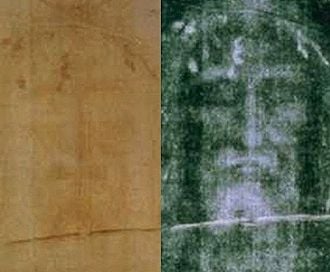
The Turin Shroud is an ordinary linen cloth which bears an extraordinary image. It is an image that only presents it's extraordinary quality when viewed as a photographic negative. The revealed image is consistent with that of a man who has been crucified, and is an image that millions of people throughout the world believe to be that of Jesus Christ.
The Turin Shroud now resides at the Cathedral of St. John the Baptist in Turin in Northern Italy, and the image it displays is that of a bearded man with apparently pierced hands and feet. There is also evidence that the man may have been beaten and crowned with thorns. The impression given is that this man had been laid on the linen which had then been folded over the front of his body. The image of this man seems to have been transferred, by unknown means to the linen.
The image seen on the Turin Shroud, to the naked eye appears very faint, but when enhanced by modern photographic techniques, other details become clear such as scourge(flail) marks, and evidence of a stab wound in his side.
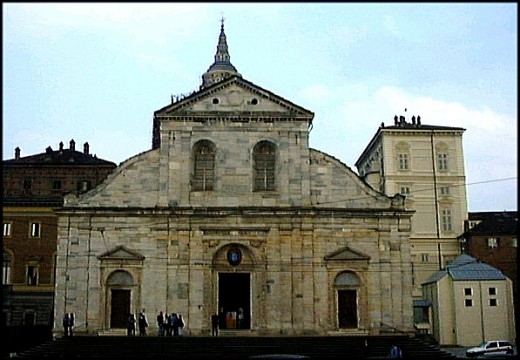
History of the Shroud of Turin
The Turin Shroud does not really appear on Historical radar before the 14th century. Although there were reports of Jesus's Shroud being venerated at various locations before this date, there is no evidence that they refer to this particular shroud.
It is said that a shroud which was claimed to be Christ's was owned by Byzantine Emperors, but was lost during the sacking of Constantinople in 1204. A similar shroud existed in the tiny town of Lirey in France and was said to be owned by the French Knight Geoffroi de Charny, although many authorities claim that it was a fake. Some even say it was forged by Leonardo da Vinci.
From the 15th Century on however, the history of the Turin Shroud is well documented. The cloth suffered burn damage in 1532 when a fire broke out in a chapel where it was stored, in Chambery, capital of the Savoy region.
It was further damaged when some molten silver dropped onto the cloth producing symmetrical scorch marks through the folded layers. The Nuns of Poor Claire attempted to repair this damage with patches.
In 1578, the Duke of Savoy, Emannuel Philibert, ordered the cloth to be brought to Turin, where it has remained ever since. The Turin Shroud remained the property of the House of Savoy until it was given to the Holy See (The Roman Catholic Church) in 1983.
The Image of Christ?
The biggest mystery of course, is how the image came to be imprinted into the Turin Shroud; was it by natural - or supernatural means?
There are a number of theories as to how the image appeared, such as strong sunshine creating a sort of natural photograph on the cloth. One of the most common theories is that the image was formed by vapour given off from a mixture of sweat and body oils which had somehow impregnated the cloth, but as critics have pointed out, dead bodies do not sweat and have no body heat to create vapours. Others have claimed that the image was created by some sort of supernatural energy release which resulted in scorching of the cloth.
The Turin Shroud image has been examined many times in order to discover whether it could be the work of a forger. Most official investigations have denied finding the presence of dyes or paints which might suggest a forgery. One analyst however, did not agree. Walter McCrone claimed to have found significant ammounts of tempera paint, and red ochre pigment on the cloth, a finding which was not accepted by the official Shroud of Turin Research Project.

Testing the Shroud
In an attempt to get to the bottom of the Turin Shroud mystery, permission was granted to carbon-date the shroud in 1988. As a fail-safe measure, shroud samples were sent to three Universities for independent testing; The University of Oxford, The University of Arizona and the Swiss Federal Institute of Technology.
Following the tests, all three authorities concluded that the Turin Shroud samples tested dated from the Middle Ages between 1260 and 1390. Not everyone however, was willing to accept the findings. Father Bruno Bonet-Eymard, a French Priest claimed that it was not the Turin Shroud which had been faked - but the carbon dating! Three peer reviewed articles have also been published since, suggesting that the samples used in the testing may not have been representative of the entire Turin Shroud.
There was even a theory proposed by writers Holger Kirsten and Elmer B Gruben in their book "The Jesus Conspiracy" that the Turin Shroud was actually genuine, but they believed that it showed evidence that Christ was still alive when placed into the tomb, and that the Vatican, in order to protect it's central religious doctrine - the Resurrection - was forced to denounce the shroud as a fake.
What if the Turin Shroud is a Fake?
Even if the Turin Shroud was proved to be a fake, Many questions still remain.
Forging fake relics was big business and a boom industry in the 14th century, but the style of the image on the shroud is very naturalistic, beyond the capabilities of most mediaeval painters.
There is also the problem of the nails through the wrists. Crucifixions always placed the nails through the wrist as this was the only way that the weight of the body could be supported on the cross. However, contemporary painters always depicted the nails as being placed through the hands and it might be suspected that a forger would have done the same.
If the Turin Shroud is indeed a forgery, most authorities claim that whoever the perpetrator was, must have been a genius and it is claimed that only Leonardo Da Vinci would have been able to carry off such a convincing hoax.
It has also been suggested by British Physician Dr.Straiton that the cloth had actually wrapped a real life body, but not of Christ. He suggests that it was the body of a 14th century Crusader who had been captured by the Saracens, and then Crucified in a cruel parody of the Death of Christ.
All this of course, gets us no closer to knowing how the image was formed. It is something we may never know the answer to. The former Editor of Nature, Philip Bell states "despite the seemingly definitive tests in 1988, the status of the Shroud of Turin is murkier than ever. Not least, the nature of the image and how it was fixed on the cloth remain deeply puzzling".
The Turin Shroud remains one of the most studied - and controversial - artifacts in human history.



Some of my other Mystery Hubs
- The Mystery of the Voynich Manuscript
Most of the purchases were pretty standard fare for those who deal in antiquarian books and documents, but as he sorted through the manuscripts, Voynich noticed one particular book which was very unusual - very unusual indeed! - Mystery of the Lost Kingdom of Llys Helig
Lly Helig is a lost Kingdom which according to legend was inundated by the sea - Did it exist? - Here is some interesting evidence that perhaps it did... - Agatha Christies Greatest Mystery.
It was 9.45pm on a cold wintery night in 1926. Agatha Christie entered her daughter Rosalind's bedroom, kissed the sleeping child, then walked out of Styles, her Berkshire home, dressed only in a grey cardigan, green knitted skirt and a velour hat, a

